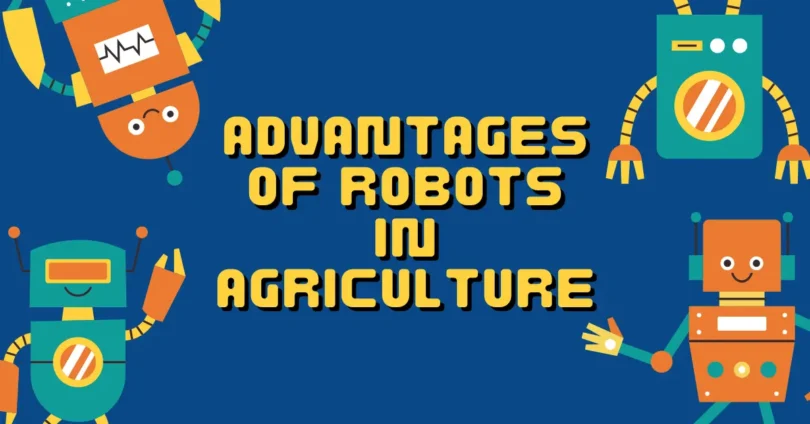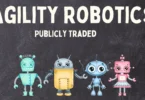In recent years, technology has completely changed the way we farm. One of the most exciting developments is the use of robots in farming. The advantages of robots in agriculture are becoming clear as they help farmers save time, reduce costs, and increase crop production.
From planting seeds to harvesting crops, robots can perform many tasks faster and more efficiently than humans. With the growing need for food and the shortage of farm labor, these robotic tools are proving to be a game-changer in modern agriculture.
How Robots Are Changing Modern Farming
Robots are not only helping farmers complete tasks faster, but they are also bringing precision and accuracy to farming. Some common types of agricultural robots include:
- Automated Harvesters: These machines can pick fruits and vegetables faster than humans.
- Seed Planting Robots: They plant seeds at the correct depth and distance for maximum growth.
- Weeding Robots: They remove unwanted plants without harming crops.
- Drones: Used for monitoring crop health, spraying fertilizers, and detecting diseases early.
Compared to traditional farming methods, robots reduce the chances of human errors, increase the speed of farming, and allow farmers to manage larger areas of land efficiently.
Improving Efficiency in Farming
One of the main advantages of robots in agriculture is efficiency. Robots can perform tasks much faster than humans. For example:
- A robot harvester can pick 2–3 times more fruits in a day than a group of laborers.
- Watering robots can irrigate large fields automatically, saving hours of manual labor.
- Planting robots can sow thousands of seeds in a few hours, which would take days manually.
Efficiency also comes from robots being able to work in all weather conditions. Unlike humans, they do not get tired, sick, or need breaks. This means work can continue without interruption, ensuring timely farming practices.
Cost Savings with Agricultural Robots
Initially, investing in agricultural robots may seem expensive. However, in the long run, they save farmers a lot of money.
- Reduced Labor Costs: Robots reduce the need for large labor teams.
- Less Waste: Precision farming ensures fertilizers, seeds, and pesticides are used efficiently, reducing wastage.
- Maintenance Savings: Modern robots are designed to work for years with minimal maintenance.
For small farmers, robots may seem unaffordable, but shared farming technology or rental robots are becoming popular solutions. Over time, the investment pays off through higher yields and lower costs.
Enhancing Crop Quality and Yield
Agricultural robots do more than just save time they also improve crop quality. Some key ways they help include:
- Precision Fertilization: Robots apply fertilizers exactly where needed, reducing overuse and promoting healthy growth.
- Pest and Disease Monitoring: Drones and sensors can detect early signs of disease, allowing farmers to act quickly.
- Optimal Watering: Automated irrigation systems ensure each plant gets the right amount of water.
By improving efficiency and accuracy, robots contribute to higher crop yields and better quality produce.
Reducing Human Labor and Fatigue
Farming is physically demanding work. Long hours under the sun, heavy lifting, and repetitive tasks can cause fatigue and health problems.
- Robots take over heavy and repetitive tasks.
- Farmers can focus on planning and managing their farms rather than manual labor.
- Safety improves, as robots can handle tasks that are dangerous for humans, like spraying chemicals.
This reduction in human labor not only improves health but also allows farmers to manage more land without additional labor.
Environmental Benefits of Farming Robots
Robots are not just beneficial for farmers they also help the environment:
- Reduced Water Usage: Precision irrigation robots minimize water wastage.
- Less Chemical Use: Targeted pesticide application reduces chemical runoff into the soil and water.
- Soil Protection: Lightweight robots prevent soil compaction, maintaining soil health.
Robots make farming more sustainable and eco-friendly, protecting the planet while improving crop production.
Technology Behind Agricultural Robots
Modern agricultural robots use several advanced technologies:
- Artificial Intelligence (AI): Helps robots make smart decisions, like detecting disease or adjusting watering.
- GPS and Sensors: Guide robots precisely across fields and monitor crop health.
- Machine Learning: Allows robots to learn from past farming activities and improve performance over time.
As technology improves, these robots will become smarter, faster, and more affordable for farmers of all sizes.
Challenges and Limitations
Despite many advantages, agricultural robots also face some challenges:
- High Initial Costs: Small scale farmers may find them expensive.
- Technical Skills Required: Farmers need training to operate and maintain robots.
- Maintenance Issues: Robots can break down and require repairs.
- Limited Flexibility: Some robots are designed for specific crops or tasks only.
Farmers can overcome these challenges by renting robots, sharing technology, or taking training programs to use them effectively.
Future of Agriculture with Robots
The future of farming is smart and robotic. Experts predict:
- Integration of AI, drones, and IoT for fully automated farms.
- Robots working alongside humans for better productivity.
- Increased affordability, making robots accessible to small and medium farmers.
With continued innovation, the advantages of robots in agriculture will grow, making farming easier, more efficient, and more sustainable worldwide.
Common FAQs About Advantages of Robots in Agriculture
Some faqs of Advantages of Robots in Agriculture:
What is the main advantage of robots in agriculture?
Robots save time, reduce labor, increase efficiency, and improve crop quality.
Can small farms afford robots?
Yes, through rental services, shared farming, or government subsidies.
Do robots replace human farmers?
No, they assist humans, allowing them to focus on planning and management.
Which crops can robots work with?
Fruits, vegetables, grains, and some specialty crops.
Are robots eco-friendly?
Yes, they use water, fertilizers, and pesticides more efficiently.
How long can robots work daily?
Robots can work 24/7 without fatigue, depending on battery or power supply.
Do robots need maintenance?
Yes, regular maintenance is required to ensure smooth operation.
Can robots detect diseases in crops?
Yes, using sensors, AI, and drones, robots can detect early signs of disease.
Are robots safe for humans and animals?
Yes, robots are designed with safety features and minimize exposure to chemicals.
Will agricultural robots become cheaper in the future?
Yes, technology improvements and mass production are reducing costs.
Conclusion
The advantages of robots in agriculture are transforming the way farming is done across the world. From planting seeds with perfect accuracy to harvesting crops faster than humans, robots make farming more efficient, cost-effective, and sustainable. They not only reduce the burden of heavy labor but also improve crop quality, save water, and protect the environment through precision farming.
Although challenges like high costs and technical training remain, the future of agricultural robots is very promising. As technology becomes more advanced and affordable, even small farmers will be able to benefit from it. Robots are not here to replace farmers, but to support them, making their work easier and more productive.


